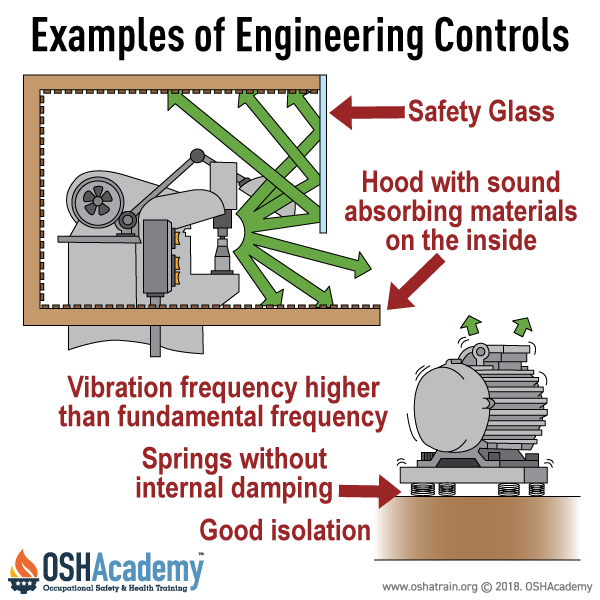Engineering Controls
For hearing loss prevention purposes, this control strategy is defined as any modification or replacement of equipment, or related physical change at the noise source or along the transmission path (with the exception of hearing protectors), that reduces the noise level at the employee's ear.
Typical engineering controls involve:
- Reducing noise at the source
- Interrupting the noise path
- Reducing reverberation
- Reducing structure-borne vibration
Simple engineering noise control solutions can reduce the noise hazard to the extent that audiometric testing, a hearing conservation program, and the use of hearing protectors are not necessary. Examples of inexpensive, effective engineering controls that can be applied include:
- Choosing low-noise tools and machinery (e.g., compressors, grinders, etc.)
- Maintaining and lubricating machinery and equipment (e.g., oil bearings)
- Placing a barrier between the noise source and employee (e.g., sound walls or curtains)
- Enclosing or isolating the noise source
Knowledge Check Choose the best answer for the question.
2-2. Which of the following is defined as any modification or replacement of equipment, or change at the noise source or along the transmission path, that reduces the noise level at the employee's ear?
You forgot to answer the question!

